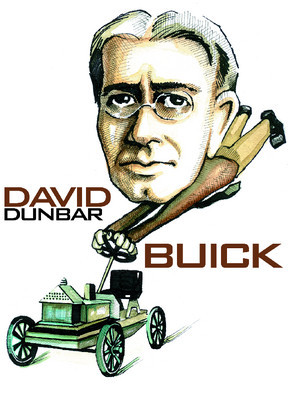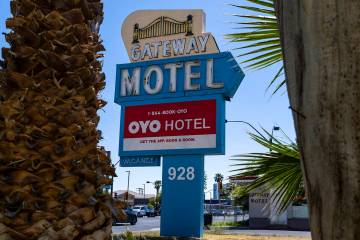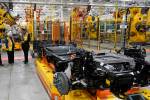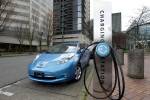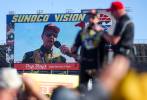Buick made bathtubs before he built cars
His name stands as a symbol now, even though the sign where the name sits measures just over 5-feet tall.
"David Dunbar Buick," the sign reads. "Buick Motor Company."
The dark green sign with the golden letters and the familiar name is one of the first things you see on a trip inside General Motors Corp.'s world headquarters on Atwater Street in downtown Detroit.
Except for the sign, Buick, the man, is all but forgotten now. But what he built, and what ultimately led to this global empire that inhabits five shimmering towers of a glass superstructure known as Detroit's Renaissance Center, cannot be underestimated.
In a roundabout way, Buick, a bathtub maker, built General Motors. Not that he ever could have anticipated where his tiny inventions would take the automotive world.
The Buick Motor Division, and in some measure General Motors, takes its name from David Dunbar Buick, a Scottish immigrant born in 1854.
His father, Alexander Buick, emigrated to the United States with his wife and son when David was just 2 years old. As a young man, he eventually settled in Detroit where he began manufacturing plumbing materials.
Along with his partner William Sherwood, Buick's success was largely due to his patented process for bonding porcelain to iron, a process that helped fuel the craze for white porcelain bathtubs.
But Buick wasn't all about tubs.
In 1899, after becoming engrossed in this new technology known as gasoline engines for automobiles, Buick established the Auto Vim and Power Co. to produce engines for farm and stationary use. He sold his plumbing business for $100,000 to raise capital for his new venture and began tinkering with using the engines he produced to power four-wheeled vehicles.
Two years later, he founded the Buick Manufacturing Co. to make engines for various car makers and to make cars himself. But his path would prove harder than even he could have imagined.
Buick was a great plumber and a whiz of an inventor, but he wasn't a very astute businessman, nor was he very personable.
Described as generally irritable and cantankerous, he exhibited an amazing propensity for losing complete financial control.
Within two years of opening his business, Buick built his first car, but his advanced designs left the company somewhat overextended. Strapped for cash, he borrowed $5,000 from Ben Briscoe, a friend who didn't doubt Buick's ability as a craftsman but was wary of his business abilities.
When Briscoe heard that a company in Flint, Mich., 115 miles from Detroit, was thinking of starting up car production, he persuaded Buick to team up with them. The firm, the Flint Wagon Works Co., was impressed with Buick's car and borrowed $10,000 from a local bank to settle the debts.
The Buick plant was shifted to Flint, but the deal left Buick with little say about the company's dealings. Essentially, Buick had signed away his future. Still, the company completed 16 cars in 1903 and 34 in 1904, all experimental machines at $1,200 each.
But Briscoe's money was also gone within a year. As before, the company was deep in debt and unprofitable. On Nov. 1, 1904, after having driven a Buick car for two months and noting that it could climb hills and run through mud like no other car, William Durant took over the company and recapitalized it with Buick as president.
Durant was the owner of Durant-Dort Carriage Co., the largest maker of horse-drawn carriages. Durant did not like automobiles, but he was a visionary and knew a self-seller when he saw it.
Six weeks later, Durant attended the New York Auto Show and came back with orders for 1,108 Buicks.
Durant was a go-getter. Like Ford, he knew the industry's future would depend on speeding up production and cutting assembly costs. Buick, on the other hand, was a craftsman who regarded each car as a unique invention. One of the two had to go and it was David Buick.
In 1906, at age 52, Buick severed his last link with the company and returned to Detroit with his wife and son.
The company went to the top as Buick's life bottomed out. In 1908, Durant acquired Oldsmobile and Cadillac to form General Motors. Chevrolet joined in 1918. Britain's Vauxhall was acquired in 1926 and Germany's Opel some years later. Buick production reached 100,000 cars a year in 1923 and surged.
And David Buick?
He died of cancer on March 5, 1929. At the times of his death he was still working as an inspector at a Detroit trade school. Buick, the man, was all but forgotten.
Millions of cars bearing his name and crest have rolled off production lines since, yet he was involved in making only 120 of them.
Briscoe wrote in 1921 that had Buick been able to keep his shares in the firm, they would have been worth more than $10 million at that time. Their value today would be almost incalculable.
Today, a green sign is all that remains.
Steven Reive is a feature writer with Wheelbase Communications. He can be reached on the Web at www.wheelbase.ws/mailbag.html. Wheelbase supplies automotive news and features to newspapers across North America.



